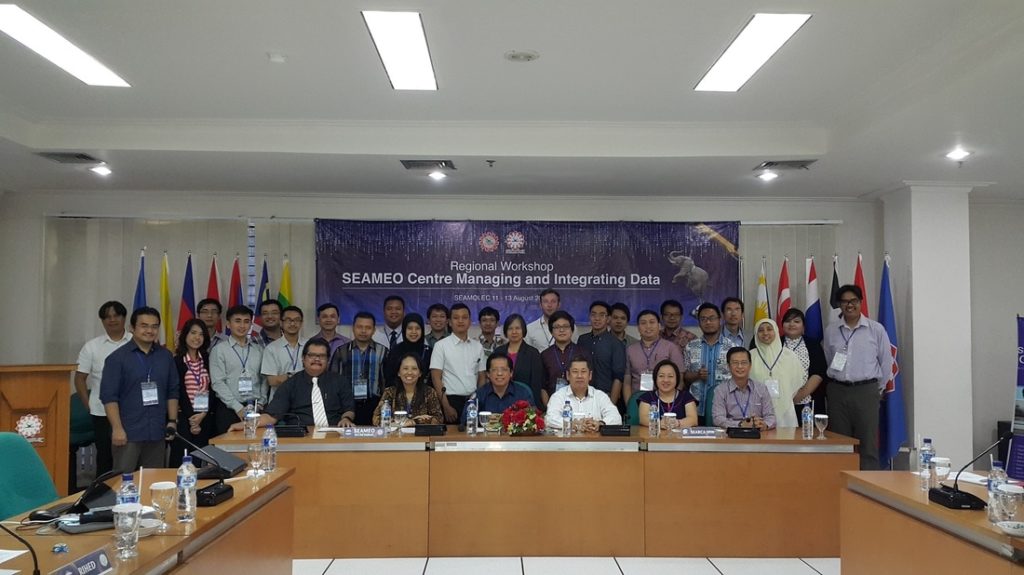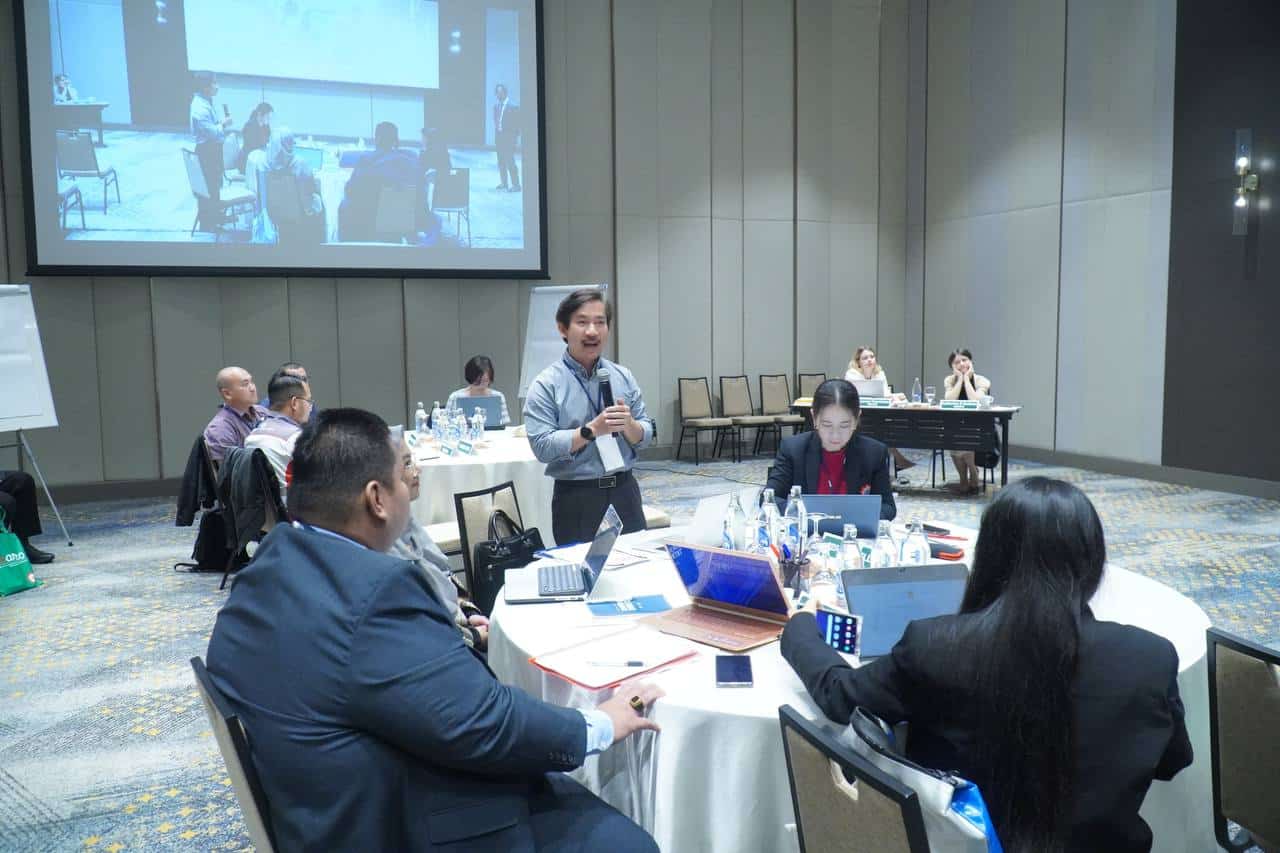On December 08, 2023, SEAMEO CELLL successfully organised a workshop on “Kominkan – the successful Japanese learning centres and lessons to be learned” in the blended mode. The event was held under the auspices of Japan Ministry of Education, Culture, Sport, Science and Technology (MEXT) and in collaboration with SEAMEO Secretariat. Participation included more than 20 (in-person) and over 300 (online) leaders and specialists and educators from various Departments of Education and Training, Centres for Continuing Education, and Associations for Learning Promoting.
Prof. Oyasu Kiichi – Director of Education Cooperation Department, Asia-Pacific Cultural Centre for UNESCO (ACCU) was the keynote speaker, alongside Mr. Emiljohn Sentillas, Policy and Planning Specialist, SEAMEO Secretariat, and Mr Khau Huu Phuoc, Manager of Research and Training, SEAMEO CELLL.

Kominkan, rooted in Japan’s community-based learning centres, embodies a multifaceted approach to continuing education. Introducing Kominkan to Vietnamese educational leaders holds immense significance for the advancement of community learning centres in Vietnam. It presents an opportunity to adopt a proven model that fosters community engagement, skill development, and knowledge dissemination. By embracing the Kominkan concept, Vietnam can bolster its efforts in providing accessible and inclusive learning opportunities, catering to a spectrum of learners and cultivating a culture of continuous growth and development within its communities. Therefore, this workshop aims not only to provide participants with a deeper understanding of Kominkan but also to expand participants’ comprehension of community learning advancement by deriving valuable insights from Kominkan.

The first presentation delivered by Mr. Khau Huu Phuoc focused on the historical inception and evolution of Kominkan, delving into its post-World War II origins, as well as its exponential growth phase with a surge in the number of Kominkan in 1955 following the establishment of the National Kominkan Association in 1951 and in response to the need to learn more skills to meet industrialisation.
When World War II ended, Japan entered a phase of reconstructing the country. This necessitated educating people so that they would have knowledge and skills to contribute and have a better life. As Japanese were living a rural way of life, and would often gather in the afternoon over a cup of tea, discussing news, exchanging experience, and learning from each other, the government initiated the Kominkan as places for such gathering.
Kominkan was institutionalised by the Social Education Act (1949), where Kominkan takes up nearly 50% of the content, thus having a strong legal status. It was established to contribute to the promotion of life-culture and improvement of social welfare of residents in city, town, village or other local communities, by pursuing various kinds of activities about the education, art and sciences, and culture which are actually based on their life.
Subsequently, Prof. Oyasu Kiichi presented on the contemporary Kominkan model. He referred to three phases of development of Kominkan that served rural community development (1940s – 1960s), individual learning and community education (1970s – 1990s), community learning for sustainable development (2000– ). He described Kominkan’s roles and functions for each phase and analysed the management and operation of Kominkan through the five areas of action recommended by UNESCO in its Recommendations on Adult Learning and Education (2015). One key message was “anyone can be a teacher and a learner at Kominkan” and “Kominkan is where people in the community can learn from each other.”

During the afternoon session, Prof. Oyasu delved deeper into the management and specific activities within various Kominkan centres. He showcased the notable Kominkan centres in Okayama and Hiratsuka cities, elucidating their current operations, particularly in addressing the ongoing societal changes. Notably, he highlighted how these centres are adapting, using examples such as Japan’s aging population, to illustrate how Kominkan centres are navigating continuous societal transformations.
Following that was an engaging Q&A session where participating educators posed numerous questions to Prof. Oyasu. These questions covered the current operational methods of Kominkan as well as the future developmental trajectory. Additionally, some inquiries were reflective, pondering the application of valuable lessons from Kominkan into the practical establishment of community learning centres in Vietnam. Finally, Mr. Emiljohn Sentillas, representing the SEAMEO Secretariat, elaborated on its mission of promoting lifelong learning, particularly non-formal education within the region and giving examples of SEAMEO’s initiatives and programmes, especially those that utilise digital technology for inclusive equitable quality education. He finished the presentation by advising using “decision compasses” when deploying technology in education. The four directions to consider are: Is it equitable? Is it scalable? Is it sustainable? Is it appropriate?

Organising this workshop to introduce Kominkan to Vietnamese educational leaders is pivotal for several reasons. Firstly, it offers a platform to share insights and best practices from a successful model of community-based learning, fostering an exchange of ideas and strategies for implementation. Secondly, it provides a first-hand experience of the practicality and effectiveness of Kominkan in enhancing continuing education, inspiring leaders to adapt and innovate within their educational frameworks. Lastly, this workshop helps to facilitate networking among educational leaders, encouraging collaboration and partnerships to strengthen the continuum of learning opportunities and ultimately enrich the educational landscape in Vietnam. Therefore, the success of this workshop marks a significant stride toward the efficient expansion and development of a centralized system for community learning centres in Vietnam. It supports and fortifies the advancement of a lifelong learning environment within Vietnam as well as the wider region.















